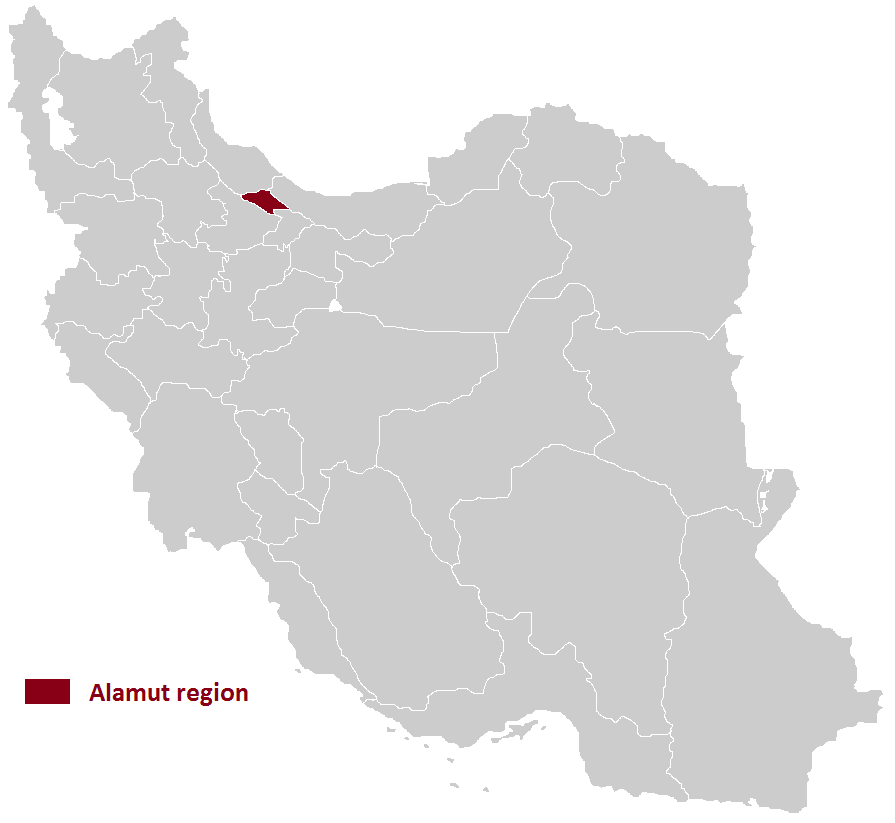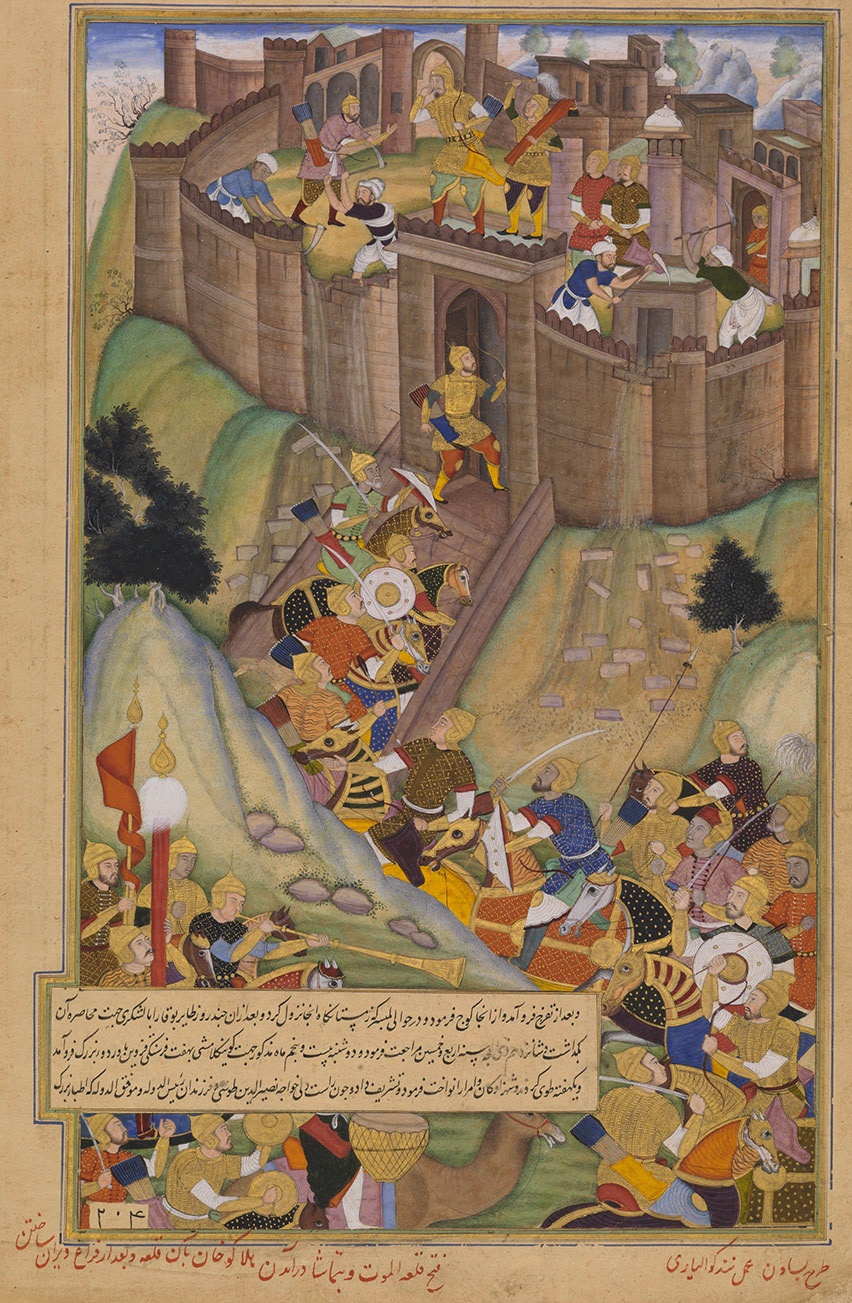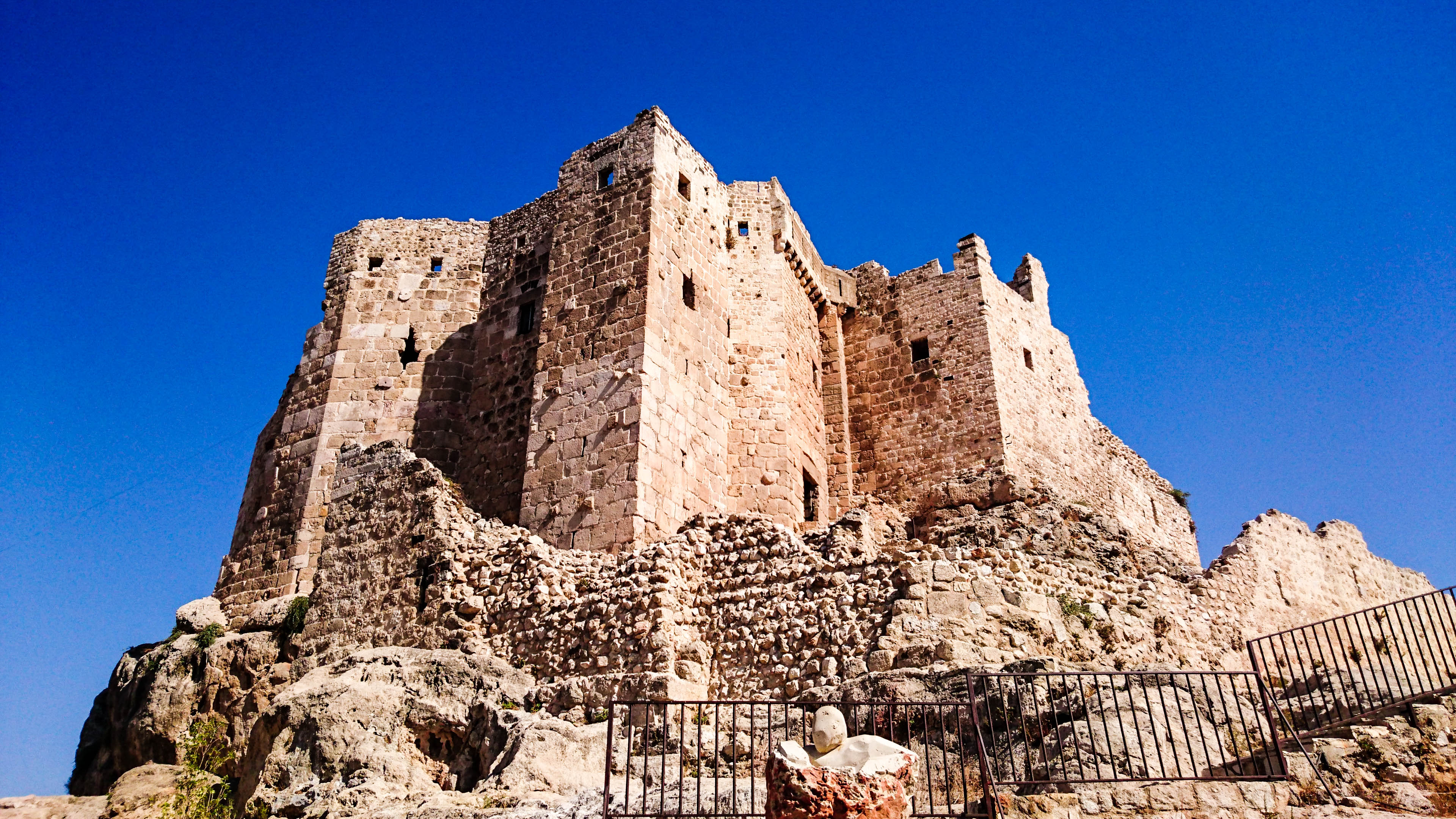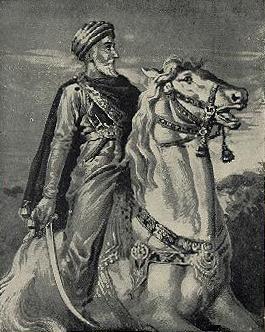|
Alamut
Alamut () or Rudbar () is a region in Iran including western and eastern parts on the western edge of the Alborz (Elburz) range, between the dry and barren plain of Qazvin in the south and the densely forested slopes of the Mazandaran province in the north. Starting from Qazvin toward Alamut, passing through the first range of hills, curvatures, forms, are significant themes in nature's composition of this area. The famous Ismaili castle of Alamut and numerous others are in this area, which served as the heartland of the state founded by Hassan-i Sabbah. According to some sources, the majority of people in northern Qazvin (Alamut) are Tats who speak a dialect of the Tati language.گونههای زبانی تاتی، دونالد استیلو، ۱۹۸۱ However, other sources claim that the majority of people in Alamut are Mazanderani or Gilaks who speak a dialect of the Mazanderani language or Gilaki language. According to some linguists, the term ‘Tati’ was ... [...More Info...] [...Related Items...] OR: [Wikipedia] [Google] [Baidu] |
Alamut Castle
Alamut (, meaning "eagle's nest") is a ruined mountain fortress located in the Alamut region in the South Caspian Sea, Caspian, near the village of Gazor Khan in Qazvin Province in Iran, approximately 200 km (130 mi) from present-day Tehran. In 1090 AD, the Alamut Castle, a mountain fortress in present-day Iran, came into the possession of Hassan-i Sabbah, a champion of the Nizari Isma'ilism, Nizari Ismaili cause. Until 1256, Alamut functioned as the headquarters of the Nizari Ismaili state, which included a series of List of Ismaili strongholds, strategic strongholds scattered throughout Persia and Syria, with each stronghold being surrounded by swathes of hostile territory. Alamut, which is the most famous of these strongholds, was thought impregnable to any military attack and was fabled for its heavenly gardens, library, and laboratories where philosophers, scientists, and theologians could debate in intellectual freedom. The stronghold survived adversaries includin ... [...More Info...] [...Related Items...] OR: [Wikipedia] [Google] [Baidu] |
Order Of Assassins
The Order of Assassins (; ) were a Nizari Isma'ilism, Nizari Isma'ili order that existed between 1090 and 1275 AD, founded by Hasan-i Sabbah, Hasan al-Sabbah. During that time, they lived in the mountains of Persia and the Levant, and held a strict subterfuge policy throughout the Middle East, posing a substantial strategic threat to Fatimid Caliphate, Fatimid, Abbasid, and Seljuk Empire, Seljuk authority, and killing several Christian leaders. Over the course of nearly 200 years, they killed hundreds who were considered enemies of the Nizari Isma'ili state. The modern term assassination is believed to stem from the tactics used by the Assassins. Contemporaneous historians include ibn al-Qalanisi, Ali ibn al-Athir, and Ata-Malik Juvayni. The former two referred to the Assassins as ''batiniyya'', an epithet widely accepted by Isma'ilis themselves. Overview The Assassins were founded by Hassan-i Sabbah. The state was formed in 1090 after the capture of Alamut Castle in the Albo ... [...More Info...] [...Related Items...] OR: [Wikipedia] [Google] [Baidu] |
Nizārī Ismā'īlī State
The Nizari state (the Alamut state) was a Nizari Isma'ili Shia state founded by Hassan-i Sabbah after he took control of the Alamut Castle in 1090 AD, which marked the beginning of an era of Ismailism known as the "Alamut period". Their people were also known as the '' Assassins'' or ''Hashashins''. The state consisted of a nexus of strongholds throughout Persia and the Levant, with their territories being surrounded by huge swathes of hostile as well as crusader territory. It was formed as a result of a religious and political movement of the minority Nizari sect supported by the anti- Seljuk population. Being heavily outnumbered, the Nizaris resisted adversaries by employing strategic, self-sufficient fortresses and the use of unconventional tactics, notably assassination of important adversaries and psychological warfare. They also had a strong sense of community as well as total obedience to their leader. Despite being occupied with survival in their hostile environment ... [...More Info...] [...Related Items...] OR: [Wikipedia] [Google] [Baidu] |
Alamut Region In Iran
Alamut () or Rudbar () is a region in Iran including West Alamut District, western and East Alamut District, eastern parts on the western edge of the Alborz (Elburz) range, between the dry and barren plain of Qazvin in the south and the densely forested slopes of the Mazandaran province in the north. Starting from Qazvin toward Alamut, passing through the first range of hills, curvatures, forms, are significant themes in nature's composition of this area. The famous Nizari Ismaili state, Ismaili castle of Alamut Castle, Alamut and List of Ismaili castles, numerous others are in this area, which served as the heartland of the state founded by Hassan-i Sabbah. According to some sources, the majority of people in northern Qazvin (Alamut) are Tat people (Iran), Tats who speak a dialect of the Tati language (Iran), Tati language.گونههای زبانی تاتی، دونالد استیلو، ۱۹۸۱ However, other sources claim that the majority of people in Alamut are Mazanderan ... [...More Info...] [...Related Items...] OR: [Wikipedia] [Google] [Baidu] |
East Alamut District
Rudbar-e Alamut-e Sharqi District () is in Qazvin County, Qazvin province, Iran. Its capital is the city of Moallem Kalayeh. Demographics Language and ethnicity The majority of people in the district are Tats who speak a dialect of the Tati language. A minority of Azerbaijani people Azerbaijanis (; , ), Azeris (, ), or Azerbaijani Turks (, ) are a Turkic ethnic group living mainly in the Azerbaijan region of northwestern Iran and the Republic of Azerbaijan. They are predominantly Shia Muslims. They comprise the largest ... also live in the district. Population At the time of the 2006 National Census, the district's population was 12,519 in 4,128 households. The following census in 2011 counted 9,801 people in 3,673 households. The 2016 census measured the population of the district as 13,701 inhabitants in 5,133 households. Administrative divisions See also * Dineh Kuh, "The Village of Mothers" Notes References Districts of Qazvin provinc ... [...More Info...] [...Related Items...] OR: [Wikipedia] [Google] [Baidu] |
Hasan Bin Sabbah
Hasan al-Sabbah also known as Hasan I of Alamut, was an Iranian religious and military leader, founder of the Nizari Ismai'li sect widely known as the ''Hashshashin'' or the Order of Assassins, as well as the Nizari Ismaili state, ruling from 1090 to 1124 AD.Lewis, Bernard (1967), ''The Assassins: a Radical Sect of Islam'', pp 38-65, Oxford University Press Alongside his role as a formidable leader, Sabbah was an accomplished scholar of mathematics, most notably in geometry, as well as astronomy and philosophy, especially in epistemology. E. G. Brown ''Literary History of Persia'', Vol. 1, p. 201. Nizam al-Mulk Tusi, pg. 420, foot note No. 3 It is narrated that Hasan and the Persian polymath Omar Khayyam were close friends since their student years. He and each of the later Assassin leaders came to be known in the West as the Old Man of the Mountain, a name given to the sect's leader in the writings of Marco Polo that referenced the sect's possession of the commanding mountain ... [...More Info...] [...Related Items...] OR: [Wikipedia] [Google] [Baidu] |
Hassan-i Sabbah
Hasan al-Sabbah also known as Hasan I of Alamut, was an Iranian religious and military leader, founder of the Nizari Ismai'li sect widely known as the '' Hashshashin'' or the Order of Assassins, as well as the Nizari Ismaili state, ruling from 1090 to 1124 AD.Lewis, Bernard (1967), ''The Assassins: a Radical Sect of Islam'', pp 38-65, Oxford University Press Alongside his role as a formidable leader, Sabbah was an accomplished scholar of mathematics, most notably in geometry, as well as astronomy and philosophy, especially in epistemology. E. G. Brown ''Literary History of Persia'', Vol. 1, p. 201. Nizam al-Mulk Tusi, pg. 420, foot note No. 3 It is narrated that Hasan and the Persian polymath Omar Khayyam were close friends since their student years. He and each of the later Assassin leaders came to be known in the West as the Old Man of the Mountain, a name given to the sect's leader in the writings of Marco Polo that referenced the sect's possession of the commanding mount ... [...More Info...] [...Related Items...] OR: [Wikipedia] [Google] [Baidu] |
Hassan II (imam)
Ḥasan ʿAlā Zikrihi's-Salām (Persianحسن على ذكره السلام) or Hassan II was the hereditary Imam of the Nizari Isma'ilis of the Alamut Period from 1162 until 1166. From his capital of Alamut he ruled parts of Persia and Syria. His chief subordinate in Syria was Rashid ad-Din Sinan, the Old Man of the Mountain. Biography Controversy over descent There are conflicting reports of Hassan's origin. One of the only historical reference extant, Juwayni (who was hostile to Ismailis), claims that Hassan was the son of Muhammad ibn Buzurg-Ummid, Fatimid dai and lord of Alamut. According to Juwayni's reports, Hassan first implicitly claimed the imamate and then claimed to be the caliph himself. However, Nizari sources generally claim an Alid descent for Hassan, and believe that Hassan ibn Muhammad ibn Buzurg-Ummid is distinct from Hassan II of Alamut. Leadership In 1164 Hassan, leading the Nizari sect of Ismaili Islam, proclaimed the '' Qiyamat'', the abrogation of S ... [...More Info...] [...Related Items...] OR: [Wikipedia] [Google] [Baidu] |
List Of Ismaili Castles
List of the strongholds or dar al-hijra of the Order of Assassins in Persia (Iran) and Syria. Most of the Persian Ismaili castles were in the Alborz mountains, in the regions of Daylaman (particularly, in Alamut and Rudbar; north of modern-day Qazvin) and Quhistan (south of Khurasan), as well as in Qumis. Most of the Syrian Ismaili castles were in Jabal Bahra' (Syrian Coastal Mountain Range). According to Juzjani, before the Mongol invasion the Assassins possessed 70 forts in Quhistan and 35 in Alamut. Overall, they probably had 250 castles. The Ismaili fortresses in Rudbar of Alamut had been built on rocky heights and were equipped to withstand long sieges; they had storehouses with high capacities and elaborate water supply infrastructure such as cisterns, qanats, and canals.B. Hourcade, “ALAMŪT,” Encyclopædia Iranica, I/8, pp. 797-801; an updated version is available online at http://www.iranicaonline.org/articles/alamut-valley-alborz-northeast-of-qazvin- (access ... [...More Info...] [...Related Items...] OR: [Wikipedia] [Google] [Baidu] |
West Alamut District
Rudbar-e Alamut-e Gharbi District () is located in Qazvin County, Qazvin province, Iran. Its capital is the city of Razmian. Demographics Language and ethnicity According to some sources, the majority of people in northern Qazvin (Alamut) are Tats who speak a dialect of the Tati language.گونههای زبانی تاتی، دونالد استیلو، ۱۹۸۱ However, other sources claim that the majority of people in Alamut are Mazanderani or Gilaks who speak a dialect of the Mazanderani language or Gilaki language Gilaki ( ) is an Iranian language belonging to the Caspian subgroup of the Northwestern branch, spoken in south of Caspian Sea by Gilak people. Gilaki is closely related to Mazandarani. The two languages of Gilaki and Mazandarani have s .... According to some linguists, the term 'Tati' was used by Turkic speakers to refer to non-turkic speakers. This could explain why some sources claim the people of Alamut are Tats, while others claim they a ... [...More Info...] [...Related Items...] OR: [Wikipedia] [Google] [Baidu] |
Kiya Buzurg-Ummid
Kiyā Buzurg-UmmīdTransliteration based on Classical Persian, as the subject of the article lived in the 1100's. In modern Iranian Persian, this would be transliterated as some variation of Kiyâ Bozorg-Omid. (; died 1138) was a '' dāʿī'' and the second ruler (''da'i'') of the Nizari Isma'ili State, ruling Alamut Castle from 1124 to 1138 CE (or 518—532 AH). He was of Daylami origin from the region of Rudbar. Career Prior to ruling the Nizari Isma'ilis, Buzurg Ummid captured Lambsar Castle for the Assassins and ruled it as commander for over twenty years. As the ruler of Alamut On 25 Rabīʿ II 518 (11 June 1124), a day before death of Ḥassan-i Ṣabbaḥ, Ḥassan appointed him his successor. He generally followed the policies of Ḥassan-i Ṣabbaḥ and enforced the Sharia strictly. In his early reign the Isma'ili hold was expanded in particular in Eshkevar and Taleghan. As opposed to Hassan Sabbah, who is depicted as a revolutionary leader, the Ismaili sources ... [...More Info...] [...Related Items...] OR: [Wikipedia] [Google] [Baidu] |







